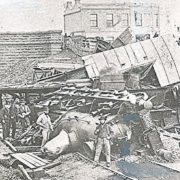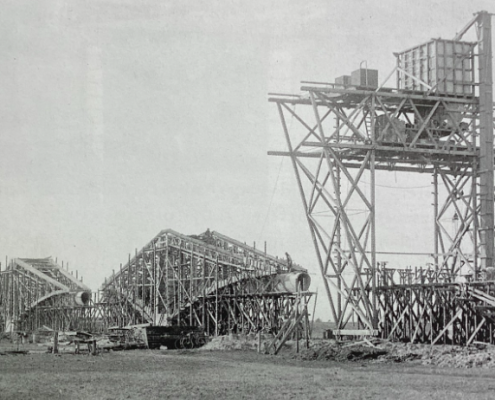Selling a property and looking for that extra edge to attract potential buyers?
Maybe you need to lift your game beyond listing just the normal features and attributes of said property.
New owners like to know about their prospective pile’s story. Its background. How it fits in locally.
Older houses often boast curious and unusual stories; layers and colours, if you like, across the years.
Dig about and find what stories there are to your house, to its occupants, its neighbourhood, and you could have a serious additional selling attribute.
Sure, features, location and price are all important. But just think, if you’re buying a new house wouldn’t you like to know its story?
Sense of place is valuable. So value it.
The following is an example of how you can tell such a story.
Oh, and another tip — use a professional writer to do the job. It can make all the difference.
…………
Cypresses and currawongs, bunya bunya pines and peppercorns, art deco and heritage are part of the furniture around Eastern Beach.
So too, heritage properties, bluestone pavers, the smell of the sea, history dripping from the fig trees and 100-mile views across glistening waters to faraway hills and horizons.
Peep inside a few houses and you’ll find all manner of collectibles, old architectural renderings, glorious cornices, fireplaces, verandahs, cast-iron and polychrome masonry, observatories …
It paid to be observant in early Geelong. Eastern Beach oversaw the merchant trade that grew Geelong as it plied its way across Corio Bay below, right from the port’s earliest Point Henry days and the shaky-looking jetties off Yarra Street.
Police quarters and pilot houses were positioned high on what is now Eastern Beach Road. Until 1960, it was Victoria Parade. With no trees impeding their view, the inhabitants of these quarters had first sight of ships entering the bay.
Painters such as Mossman and Liardet, in the 1840s, depicted Eastern Beach as an area apart from the centre of Geelong. It was lightly wooded and a solid uphill walk from the Corio and Yarra streets CBD. But then, everywhere in Geelong was an uphill walk those days.
It wasn’t long before the town’s well-to-do took up residence there: Fyfe, Day, Douglas, Solomon, Harding and numerous others all found their way over time.
Alexander Fyfe, one of its earliest developers, built the illustrious but ill-fated Singapore Terrace there. Just near Swanston Street; nine magnificent units of imported cedar and housing more than 70 wealthy residents.
That was in 1855. In 1862, sadly, the whole project came crashing to the ground in a terrifying blaze.
But Eastern Beach didn’t lose its allure.
In the late 1880s, an exquisite etching of Eastern Beach by artist Melton Prior was published in the London Illustrated News.
The area was clearly a prosperous Antipodean idyll, populated with wooden bathing sheds and sailing ships. Elegant, coiffed ladies, well-dressed gentleman and happy cherubs lolled and strolled about the grassy cliffside paths. Two-storey mansions punctuated the background.Things didn’t come much better in Victorian times.
By the 1920s, buildings such as the Walbaringa Maisonettes, Windlesham and Rosehaugh brought new inter-war architectural blood to a precinct where accountants, merchants, auctioneers, solicitors and retailers had long occupied federation and Victorian cliffside homes.
Rosehaugh, at present-day 48 Eastern Beach Road, was built by William Reid after he bought the site as fenced land from the estate of John Price in 1923. The Reid family kept the house until the late 1960s when it was bought by Clive Hill. It changed hands again, more recently, to its present owners, who hail from Victoria’s southwest.
Less than a stone’s throw from the historic iron prefab Corio Villa, which sold for an undisclosed sum in 2013 after being advertised at more than $5.2 million, Rosehaugh is an extremely rare property to hit the market.
When the Californian bungalow-styled Rosehaugh came into being, then as now, big changes were afoot in Geelong.
The Market Square clock tower was removed, after nearly 70 years in the town’s centre, Bert Rankin was given the nod to skipper the Geelong Football Club ahead of their first VFL flag. Carji Greeves took out the first Brownlow Medal, after Charles Brownlow died months earlier.
A new bridge was built over the Barwon, Ford started building a new factory at North Geelong, the Phosphate Works too. The Joy Ark on the waterfront was being dismantled, its frame to be re-used building The Palais.
Meanwhile, City Hall was clamouring for a clean-up of the rubbish tip further out around neighbouring Eastern Park, presaging the start of building on the art deco swimming enclosure at Eastern Beach. Things were looking up for the area, and by and large they’ve remained up ever since.
Mind you, salubrious as Eastern Beach might be, it’s not been without its peccadilloes.
Running squabbles between police and hoon hot-rodders were long a fixture of the area. No so these days. And a certain former mayor resident along the cliff-face once campaigned for a casino on the waterfront, basically in front of his home, before he was bundled away behind bars for nicking millions that he blew on gambling.
There’s also the story of another former mayor, and a senior local public servant, both resident on the estimable Eastern Beach, as the road is abbreviated, clashing nastily over fenceline encroachments, reportedly with sizeable firearms drawn in the standoff.
One of the more curious tales involves Dr Day, John Day, whose home was beside the site that would become Rosehaugh. Day experimented with all sorts of things; ozone, hydrogen peroxide, turps, benzene, petrol, essential oils inter alia. He ran up diagnostic blood tests and other clever 19th century medical advances.
Day’s antiseptic work led to the world’s first toilet deodoriser. A chemical version, perhaps, of the gnarled ancient peppercorns lining the former Victoria Parade once widely viewed, in the days of nightsoilmen, as repellent to insects and other nasties.
They’ve certainly helped maintain that salubrious aspect of Eastern Beach, those pretty, heavily-scented beauties. And make no mistake, this address is still salubrious.
Very salubrious.
© noelmurphy.com.au




















